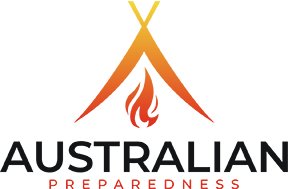No products in the cart.

It’s no secret that Australia has some pretty difficult terrain to deal with. However, that should not deter you or your emergency preparedness. Australia is also known to have some fairly gnarly creatures and gigantic spiders. We believe everyone should have the knowledge to handle the different terrains, but to also understand what they are up against. Part of prepping and emergency preparedness is having the proper knowledge to control the environment around you (a slogan we live by!). Now, onto the tips!
The right gear is essential
Understanding your terrain is one thing, but investing in the right gear is another. We stock gear from a few different suppliers that works extremely well. The first piece of gear everyone should invest in is a good bag. If you find yourself walking for miles, a decent backpack will prevent you from having back pain or from leaving necessary items behind because you can’t support the weight. The Boundary Dry Pack comes with three different backpacks of different sizes, and they are all waterproof. The last thing you need is for all of your equipment to be soiled by water. So having the right bag will be important for you and being able to handle different terrains. If you are a motorcyclist, lugging gear around will be more of a challenge for you. But that is precisely why investing in good straps for helping you carry gear around.
Learn from the locals
As a prepper, you will likely find yourself in a multitude of situations, in a variety of different environments. You won’t find better tips than from the very people who live in those areas. Whether you find yourself on the coast or in the outback. Researching the actual environment will help in case you ever find yourself there. We recommend scouting out the various Australian terrains and learning about what exactly is there. For example, you may need to add extra amenities to your car (like a first aid kit), or you may want to invest in other items to be successful there. Either way, getting out of your comfort zone and camping. There for a few days will be the most beneficial so you know what you are getting yourself into.
The best places to camp
So, you may be asking, how do you set up camp in different terrains? That will vary from place to place, but generally, a good camping spot will be:
- Flat on the ground with a clearing (suitable for a fire & to keep the local wildlife at bay)
- About 60 meters away from water (in an ideal world)
- Away from trails and other people
- On higher ground away from watercourses!
- Away from mountains of rocks that will cause a landslide
- Not under trees with loose branches and limbs (aka widowmakers)
- Try to camp behind a large natural wind shelter – bolder, mound, thick, trees etc
At Australian Preparedness, we want everyone to be equipped with useful knowledge. Which is why we have prepared a list of tips that anyone, from the prepping beginner to the prepping expert can use.
